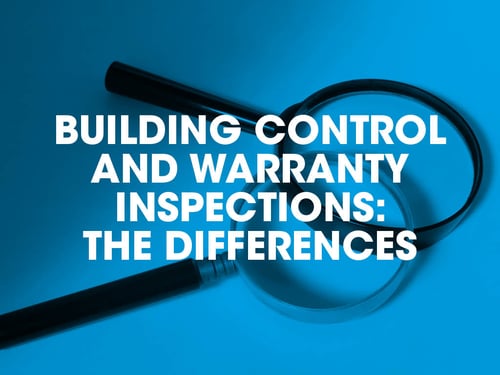Building Control for Building Regulations
Every new home, whether it is a single self-build or a development consisting of hundreds of houses, must comply with Building Regulations. They are statutory requirements. The Approved Documents provide guidance on how these Regulations may be achieved but remember that these are minimum standards, derived in the main from past building failures.
The Building Control Surveyor is interested mainly in compliance on the day that they visit, or at the time that a completion certificate is issued. For some elements, a Building Control Surveyor will require more information than the Warranty Surveyor, for example smoke control to common areas of an apartment-type development.
Warranty Inspections
Warranty technical requirements tend to be founded upon the Building Regulations, but in many instances go into greater depth due to the experience we have developed through past insurance claims.
Take basements, for example. A Warranty Surveyor will ask for strict compliance with the guidance in the British Standard, referred to in the Building Regulations, whereas the Building Control Surveyor may only require compliance in principle.
Warranty Surveyors are generally required to consider the performance on an ongoing basis, and so for our basement example they have to be satisfied that a basement waterproofing is appropriate for all ground conditions and water table events.
Take a flat roof as another example. While a Building Control Surveyor may be concerned that there is no water ingress on inspection or on completion, a Warranty Surveyor will want to ensure that the roof not pond excessively and fail through increased pressure from ponding on joints in any membrane or deflection of structure within a 15-year period.
Reassurance and quality build
With Building Control and Warranty Surveyors inspecting your self-build home or developments to help manage risk during construction, both you and the homebuyer or tenant will be reassured to know that the properties are built both according to Building Regulations and – with a Certificate of Insurance for warranty cover issued against them – will perform well in the future.
Want to learn more? Read our guide to risk-management site inspections.

